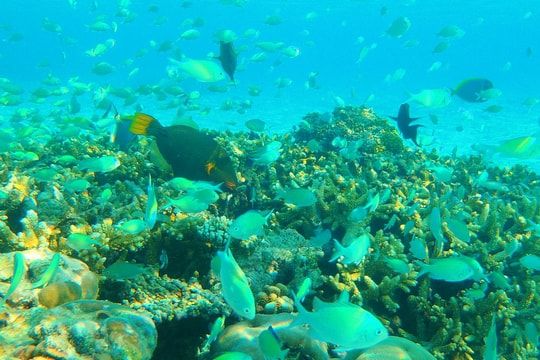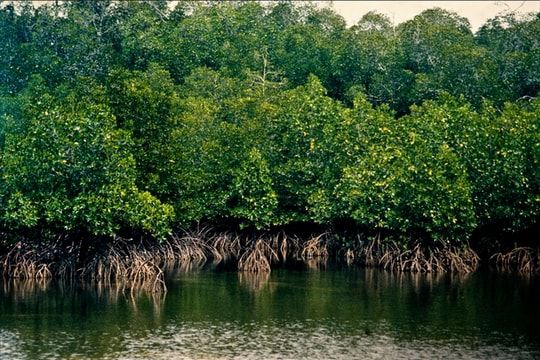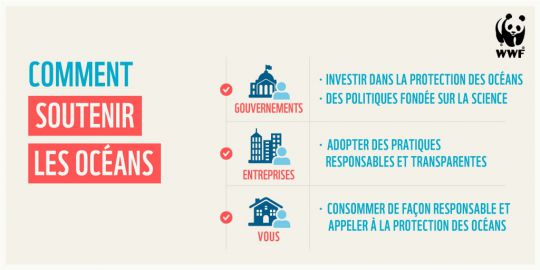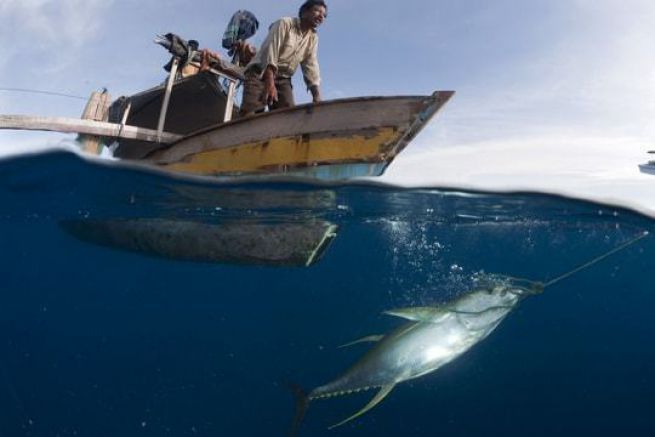Marine species reduced by half
WWF's Living Planet Oceans Report has just highlighted the decline in fish populations worldwide. Even if some of them are in danger of collapsing, it is not yet too late to act against the threats to the oceans. Indeed, in 40 years, half of the marine species (mammals, birds, reptiles and fish) have disappeared. Some have even seen their numbers reduced by nearly 75%, such as tuna, mackerel and bonito.
FOR NEARLY 3 BILLION PEOPLE, FISH IS THE MAIN SOURCE OF PROTEIN
"In light of our findings and the urgency of changing our course, we have moved up the publication date of our report, which provides the most accurate picture possible of the health of our oceans explains Marco Lambertini, Director General of WWF International. "Within a single generation, human activities have severely degraded the oceans by catching fish at a rate greater than their reproductive rate and destroying nurseries. Profound changes are essential if we are to restore the abundance of ocean life for future generations." adds Isabelle Autissier, President of WWF France.

IN TOTAL, FISHING AND AQUACULTURE SUPPORT 10-12% OF THE GLOBE'S POPULATION
"What we are witnessing is a race for fish that could well end in the depletion of a vital food source for people and the disappearance of a major economic driver. The collapse of ocean ecosystems has the potential to trigger a serious economic crisis and undermine the results of our fight to eradicate poverty and malnutrition." warns Marco Lambertini.
POPULATIONS OF FISH SPECIES CONSUMED BY HUMANS HAVE DROPPED BY HALF OR MORE FOR SOME OF THE MOST IMPORTANT SPECIES
Between 1970 and 2012, the report reveals a 49% decline in marine populations. This analysis was conducted on an observation base of 5,829 populations belonging to 1,234 species. It is based on a data set that is nearly twice as rich as past analyses, but paints a clearer, but also more disturbing, picture.

Coral reefs and seagrass beds in decline
It is not only fish that are affected by this decline. Indeed, coral reefs, mangroves and seagrass beds host many species of fish and serve the populations. However, these are also in danger. Coral reefs and seagrass beds could disappear from the globe by 2050 due to climate change.
This would represent a catastrophic extinction, with dramatic consequences for communities. Indeed, more than 25% of all marine species live in these "forests" of the seas and nearly 850 million people benefit directly from their economic, social and cultural services.
WORLDWIDE, MANGROVE COVER SHRANK BY NEARLY 20% BETWEEN 1980 AND 2005
Overfishing, but not onlyâeuros¦
Overexploitation is clearly the primary threat to ocean biodiversity, but it is not the only one. The study also shows that climate change is also causing more rapid oceanic mutations than at any other time in millions of years.
Rising temperatures and ocean acidity due to carbon dioxide exacerbate the negative impacts of overfishing, but also other threats, such as habitat and population degradation.

IF TEMPERATURE CONTINUES TO INCREASE AT THE CURRENT RATE, THE OCEAN WILL BE TOO HOT FOR CORAL RIVER IN 2050
"The good news is that solutions exist and we know what they are. The ocean is a renewable resource capable of meeting the needs of all future generations if the pressures to which it is exposed are effectively mitigated." says Isabelle Autissier. "If we respect limits, the ocean will contribute fully to food security, livelihoods, economies and our natural systems."
How to react
In order to preserve ocean resources, several measures should be taken as a matter of course, such as safeguarding and restoring the marine capital, consuming more sensibly and giving priority to sustainable development.
World leaders should also make ocean health and coastal habitat preservation a priority in the implementation of the UN Sustainable Development Goals officially approved at the end of the month (2030 Agenda for Sustainable Development). The goal is to fight poverty and enhance food security. The agenda must take into account habitat destruction, overfishing, illegal fishing and marine pollution.

MORE THAN 5,000 BILLION PIECES OF PLASTIC, WEIGHING SOME 250,000 TONS, ARE FLOATING IN THE OCEAN
Marine Protected Areas are also one way to protect ocean assets. A WWF report, Marine Protected Areas, a good investment for the health of the oceans had already shown the potential of MPAs. That study showed that every dollar invested in the creation of marine protected areas can triple the benefits, including employment, coastal protection and fisheries. The same analysis found that investing in increased protection of critical habitats would result in net benefits of between US$490 billion and US$920 billion over the period 2015-2050.
The upcoming World Climate Conference in Paris will have a decisive impact on the future of the oceans.
CORAL REEFS HAVE LOST MORE THAN HALF OF THEIR REEF-BUILDING HARD CORALS IN THE LAST 30 YEARS












